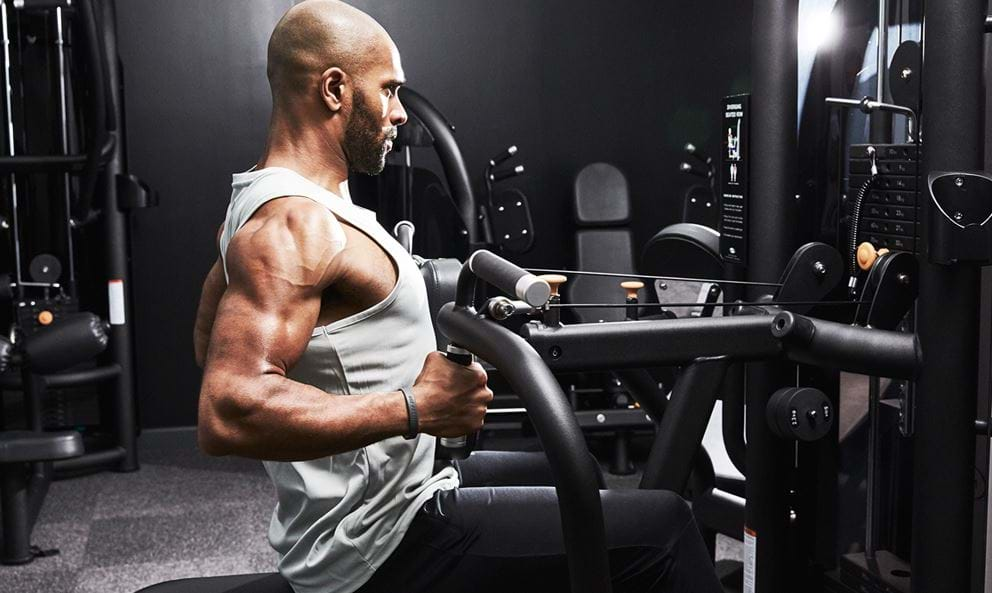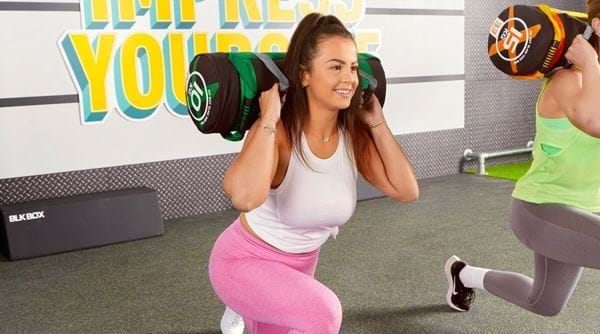How often should you train a muscle for muscle growth?

Written by

If you're after the most effective, muscle building results in the quickest time possible, read on for top tips based on proven science.
How often should you train for muscle growth?
For years most people who lifted weights followed a traditional bodybuilder style split routine training one body part per day, once per week i.e.
- Monday - Chest
- Tuesday - Back
- Thursday - Legs
- Friday - Shoulders and Arms
While this has proven to deliver results time and time again, research has shown that it might not be the most optimal way to train. According to science, there’s another approach you can follow that can be more effective, so you can reap results quicker.
Before we dive right into the training approach, let me explain what training frequency is.

Training frequency counts
Training frequency is the number of times you train a muscle in a week. It’s also important to consider how heavy the weights are. Just repeatedly lifting heavy weights will increase muscle size and strength...eventually...but your training time is precious so this is where the following time-effective, results-based training plan comes in.

A more optimal training frequency
A training frequency of once a week will get you bigger muscles, but research as highlighted below shows that a training frequency of 2-3 times per week is more effective in reaching this goal.
“When comparing studies that investigated training muscle groups between 1 to 3 days per week on a volume-equated basis, the current body of evidence indicates that frequencies of training two times per week promote superior hypertrophic outcomes compared to one time.”
“It can therefore be inferred that the major muscle groups should be trained at least twice a week to maximize muscle growth; whether training a muscle group three times per week is superior to a twice-per-week protocol remains to be determined.” 1
This is definitely a training principle that I apply to all my clients that want to increase muscle and in my own training.
Don't panic though, this doesn’t mean you have to start training twice as much! Simply do a similar amount of exercises per body part each week but spread them out and train multiple body parts each session. An example of how you might want to fit this approach to your training programme is outlined below.
How to fit this into your weekly workouts
To ensure you train each muscle group twice a week, you could structure a three-session training week as follows:
Session 1 - Chest, back (horizontal plane) and legs
- Squat
- Single Arm Row
- Stiff Leg Deadlift
- Chest Press
- Seated Row
- Hamstring Curl
- Flyes
Session 2 - Shoulders, back (vertical plane*) and legs
- Deadlift
- Pull Ups / Close Grip Pull Down
- Lunges
- Shoulder Press
- Wide Grip Pull Down
- Lateral Raises
- Leg Extension
Session 3 - Upper body: Chest, back, (horizontal and vertical plane*) and shoulders
- Chest Press
- Single Arm Row
- Shoulder Press
- Pull Up/ Close Grip Pull Down
- Incline Chest Press
- Seated Row
- Wide Grip Pull Down
- Lateral Raises

*Exercises for your back muscles can either be exercises where you pull a resistance towards your torso through a horizontal plane like a seated row or where you pull a resistance towards you from above your head. A good programme should include both types of movement. For help with any of the exercises listed above, simply ask a member of the team.
Whilst other approaches do have their merit, it’s important to note that regardless of which training approach you take, in order to reap optimal results, your workouts should be designed with you, your goals and lifestyle in mind. This is where the help of a personal trainer can be really beneficial.
About the author: Chris is passionate about offering effective and genuine training advice. He has worked in the fitness industry since 1996 and been a Personal Trainer since 2001. As a trainer Chris has won transformation contests, helped 100s of clients achieve results, regularly travelled and trained celebrities on tour and over the years has witnessed many fitness fads and gimmicks come and go. Chris has a BSc in Sports Science and was gained the NSCA Certified Strength and Conditioning Specialist qualification, which is possibly the most prestigious Personal Training qualification available.
Chris' website: https://www.personaltrainermarylebone.com/
Source
1 Effects of Resistance Training Frequency on Measures of Muscle Hypertrophy


